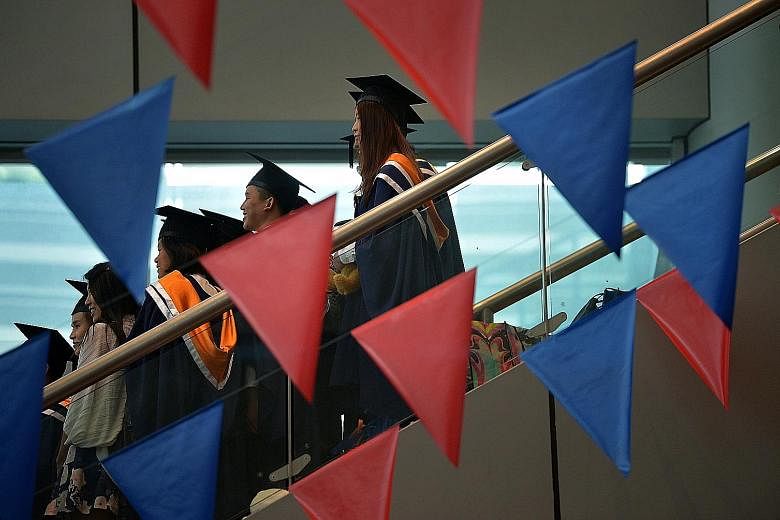Removal of mid-year exams
Mid-year examinations at some levels were scrapped this year, as part of a big push across the education system to move away from an over-emphasis on academic results.
The Ministry of Education (MOE) had announced in September last year that there would be no more mid-year exams for Primary 3 and 5 pupils as well as Secondary 1 and 3 students by 2021, to move away from the narrow focus on grades and help schoolchildren discover the joy of learning.
By next year, more than half of primary schools and over 90 per cent of secondary schools would have done away with mid-year exams for some levels - a year ahead of schedule.
MOE had said cutting these exams will allow more space for students to adjust during the "key transition" years, where they have to study new subjects and deal with higher content rigour. It will also free up about three weeks of curriculum time every two years for teachers to possibly explore more creative ways of applied and inquiry-based learning.
New PSLE scoring system
Next year's Primary 5 pupils will be graded with the new Primary School Leaving Examination (PSLE) scoring system, a year ahead of when they sit the national exam, to familiarise them with it.
They will be the first cohort to undergo the new PSLE grading in 2021 which promises to reduce stress and competition among pupils.
It will assess them based on how well they do in subjects, regardless of their peers' performance.
MOE released in July more details of the new system, which replaces the current PSLE T-score, where each pupil is compared with his or her peers and assigned a score.
Pupils will be given Achievement Levels 1 to 8 for each subject in their examination results, instead of grades A* to E. The total PSLE score will be a sum of the scores for the four subjects, with possible scores ranging from four to 32.
When they get to Primary 6 in 2021, they will be given the cut-off entry scores of all secondary schools based on the new grading earlier, so that they have more time to select schools.
Foundation-level subjects - which cover a subset of the curriculum covered at the Standard level for those who are weaker in the subject - will be pegged to AL6 to AL8 of the Standard-level subjects.
MOE had said that about 10 per cent of PSLE pupils take up at least one Foundation-level subject, and assured parents that it is possible for a pupil to qualify for Express or Normal (Academic) stream even if their child takes one Foundation-level subject or more.
Uni, poly bursaries being raised
Government spending on bursaries for university and diploma students is set to rise, with bursary amounts going up next year.
Education Minister Ong Ye Kung had said in August the bursary amounts are being raised as more students from lower-income households are making it to polytechnics and universities.
Universities play an important role in social integration and in enabling social mobility, he added. A total of 21,000 undergraduates and 33,000 polytechnic students are expected to benefit from the higher bursaries.
With the bursary hikes, polytechnic students from the lowest 20 per cent of household income groups will pay no more than $150 of the $2,900 annual fees - $400 less than what they pay each year now.
At the university level, the most needy students will pay only $2,000 a year, compared with the $4,200 they currently pay. The full fee for a general degree is $8,200 a year.
In addition, needy students who make it to medicine and dentistry programmes will pay significantly less, to ensure that they are not deterred from entering these expensive university courses.
With the increased bursary support from government and university bursaries, students from the bottom 20 per cent income bracket will pay no more than $5,000 a year for these two courses.
This group of students currently fork out $24,900 to $30,700 for the courses at the National University of Singapore and Nanyang Technological University.

